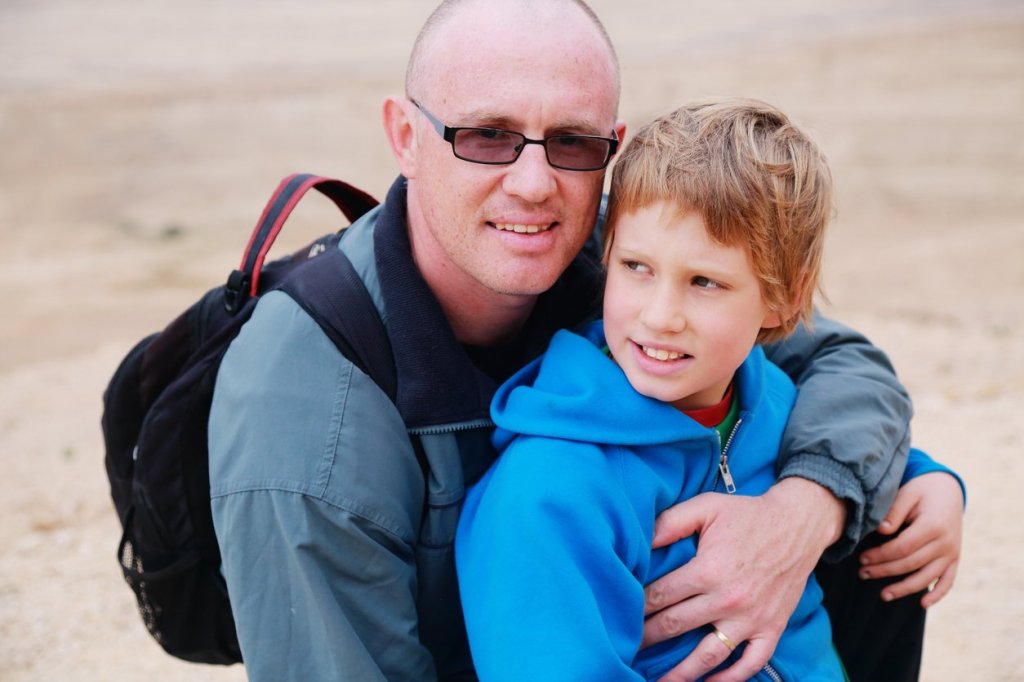
6 Great Games and Toys for People with Autism Spectrum Disorder
If you’re caring for a child or adult with Autism Spectrum Disorder (ASD), it’s likely you’ve watched them deal with some level of hyper- or hypo-sensitivity to their surroundings. ASD affects sensory processing so that sounds, touch sensations, and other stimuli feel either too overwhelming or too muted to ground them in their environment. This can make it difficult for children and adults with ASD to stay calm and focused in a typical classroom setting, for example, or to interact with others in their peer groups.
Wacky Tracks Snap and Click Fidget Toys (Neliblu)
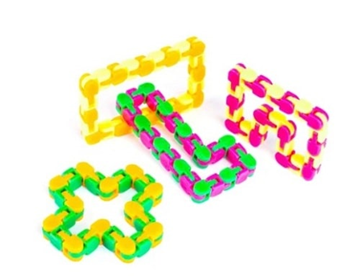 A long-time favorite for kids and adults with special needs, Snap and Click toys from Neliblu are made up multicolored links that click audibly when bent into different shapes. The auditory and tactile feedback these fidget toys provide is great for helping people with ASD stay focused or calm down.
A long-time favorite for kids and adults with special needs, Snap and Click toys from Neliblu are made up multicolored links that click audibly when bent into different shapes. The auditory and tactile feedback these fidget toys provide is great for helping people with ASD stay focused or calm down.
Dimpl (Fat Brain Toys)
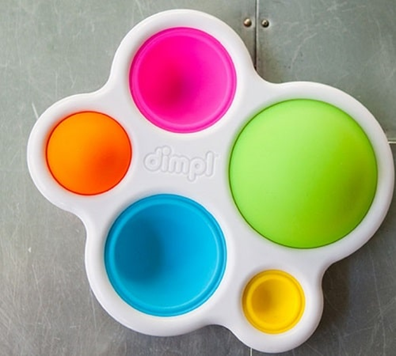 With its bright colors and simple design, the Dimpl is a great toy for toddlers or children one year or older. The circular bubbles are fun to pop from one side of the frame to the other, and kids will enjoy experimenting with methods to poke and push the differently sized “dimpls.” The cause-and-effect motion of popping dimpls from one side to the other is also excellent practice for developing fine motor skills and sensory perception. As a testament to its popularity and value, the Dimpl received a Parent’s Choice Foundation Gold Award in 2018for safe and educational childhood toys.
With its bright colors and simple design, the Dimpl is a great toy for toddlers or children one year or older. The circular bubbles are fun to pop from one side of the frame to the other, and kids will enjoy experimenting with methods to poke and push the differently sized “dimpls.” The cause-and-effect motion of popping dimpls from one side to the other is also excellent practice for developing fine motor skills and sensory perception. As a testament to its popularity and value, the Dimpl received a Parent’s Choice Foundation Gold Award in 2018for safe and educational childhood toys.
Rubik’s Perplexus Hybrid 2 x 2 (Spin Master Games)
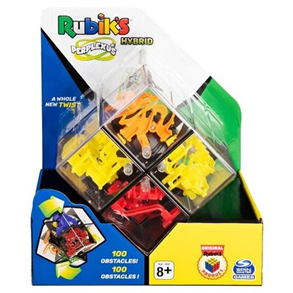 The Rubik’s Perplexus Hybrid 2 x 2 combines a Rubik’s cube and with the labyrinth-style 3D puzzle game Perplexus. Twist and turn the puzzle blocks to line up the numbered tracks and maneuver the steel ball to the finish line, without falling off the tracks. There’s a quick learning curve for this puzzle, making the challenge fun even for those trying it for the first time. The Rubik’s Perplexus Hybrid 2 x 2 is ideal for kids and adults ages 8 and up. Aside from providing hours of entertainment, it helps build problem-solving skills and improve dexterity. This small and portable game is a great choice to bring for waits at the doctor’s office or long car rides.
The Rubik’s Perplexus Hybrid 2 x 2 combines a Rubik’s cube and with the labyrinth-style 3D puzzle game Perplexus. Twist and turn the puzzle blocks to line up the numbered tracks and maneuver the steel ball to the finish line, without falling off the tracks. There’s a quick learning curve for this puzzle, making the challenge fun even for those trying it for the first time. The Rubik’s Perplexus Hybrid 2 x 2 is ideal for kids and adults ages 8 and up. Aside from providing hours of entertainment, it helps build problem-solving skills and improve dexterity. This small and portable game is a great choice to bring for waits at the doctor’s office or long car rides.
Spinner Pendant (Chewigem)
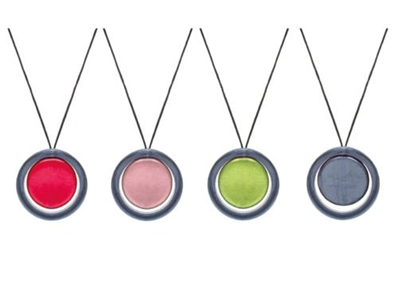 If you’re caring for someone with ASD who seeks oral sensory input, Chewigem from Scotland designs discreet, wearable products to meet those needs. The Spinner Pendant provides sensory regulation on two fronts: a rotating inner circle for fidgeting, and moderately durable, flexible material for chewing. One side of the inner circle is gray and the other is your choice of green, pink, or red for some added visual interest when spinning. The Spinner Pendant is top-rack dishwasher safe and lasts between three weeks (for aggressive chewers) and six weeks (for mild chewers). It’s suitable for anyone ages 3 and up.
If you’re caring for someone with ASD who seeks oral sensory input, Chewigem from Scotland designs discreet, wearable products to meet those needs. The Spinner Pendant provides sensory regulation on two fronts: a rotating inner circle for fidgeting, and moderately durable, flexible material for chewing. One side of the inner circle is gray and the other is your choice of green, pink, or red for some added visual interest when spinning. The Spinner Pendant is top-rack dishwasher safe and lasts between three weeks (for aggressive chewers) and six weeks (for mild chewers). It’s suitable for anyone ages 3 and up.
Hammock Swing Kit (National Autism Resources)
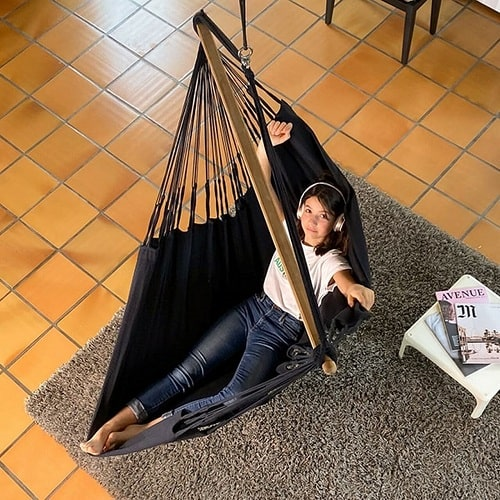
For kids and adults of all ages, this Hammock Swing Kit from National Autism Resources is comfortable and durable, with soft fabric and rope extensions to allow for even weight distribution. The Hammock Swing provides strong vestibular input and a calming pressure that can reduce the need for sensory-seeking behaviors. The kit includes everything necessary to set up the swing safely and securely. It’s tear-resistant with heavy-duty stitching and reinforced edges, supporting up to 285 pounds.
Spooner Board Pro Balance Board (Spooner Board)
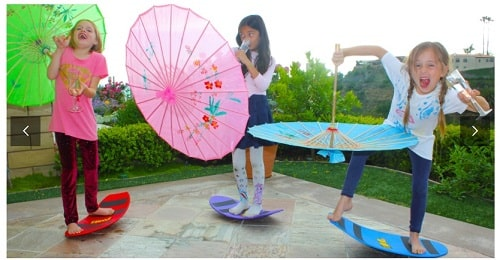 The Spooner Board Pro Balance Board is ideal for sensory seekers of movement and promotes balance, strength, and gross motor skills for young people with ASD. Designed to simulate the feeling of surfing, snowboarding, and skateboarding, the board allows riders to spin or rock however they like while sitting or standing on the curved surface. The balance board can be used indoors or outdoors on all surfaces, and is safe for ages 3 and up. The design of the Spooner Board Pro allows taller riders (4 feet and up) to balance with a comfortable shoulder-width stance. If you’re looking for a toy for anyone shorter than 4 feet, the Spooner Freestyle would be better suited for them. It’s a good idea to take developmental and sensory needs into account when selecting toys and games for a loved one with ASD. Putting aside the gains in coordination or focus made possible by options such as these, people with ASD enjoy having reliable methods of sensory regulation that make them happy. The examples listed above are suitable for a variety of age ranges and abilities, but might not interest your loved one specifically. You know them best, and the most appreciated toys and games will always cater to their specific interests. Need help caring for a loved one with ASD? Learn more about Careforth’s coaching and support program for caregivers of Medicaid-eligible friends and family members.
The Spooner Board Pro Balance Board is ideal for sensory seekers of movement and promotes balance, strength, and gross motor skills for young people with ASD. Designed to simulate the feeling of surfing, snowboarding, and skateboarding, the board allows riders to spin or rock however they like while sitting or standing on the curved surface. The balance board can be used indoors or outdoors on all surfaces, and is safe for ages 3 and up. The design of the Spooner Board Pro allows taller riders (4 feet and up) to balance with a comfortable shoulder-width stance. If you’re looking for a toy for anyone shorter than 4 feet, the Spooner Freestyle would be better suited for them. It’s a good idea to take developmental and sensory needs into account when selecting toys and games for a loved one with ASD. Putting aside the gains in coordination or focus made possible by options such as these, people with ASD enjoy having reliable methods of sensory regulation that make them happy. The examples listed above are suitable for a variety of age ranges and abilities, but might not interest your loved one specifically. You know them best, and the most appreciated toys and games will always cater to their specific interests. Need help caring for a loved one with ASD? Learn more about Careforth’s coaching and support program for caregivers of Medicaid-eligible friends and family members.
More insights like this:
-

Classifying and Defining Autism Spectrum Disorder: A Guide for Caregivers
Read more: Classifying and Defining Autism Spectrum Disorder: A Guide for CaregiversUntil 2013, autism was classified under a handful of labels, such as Asperger’s Syndrome and Pervasive Developmental Disorder-Not Otherwise Specified, which are no longer commonly in use. It was the publication of the DSM-5-TR, the most recent edition of the diagnostic handbook trusted by health professionals around the world, that merged these various diagnoses…
-

5 Great Holiday Nutritional Tips for Loved Ones with Complicated Medical Conditions
Read more: 5 Great Holiday Nutritional Tips for Loved Ones with Complicated Medical ConditionsFor many of us, the holiday season is a time of celebration, reconnecting with friends and family, and eating lots of delicious food. But for people with medical conditions that place restrictions on what they’re able to eat, the holidays can be a difficult time to stay on track.
-

Caring for Someone with End-Stage COPD? Here’s What You Should Know
Read more: Caring for Someone with End-Stage COPD? Here’s What You Should KnowChronic obstructive pulmonary disease (COPD) is a progressive condition for which a cure has not yet been discovered. It inflames a person’s lungs in a way that can obstruct the airway with swelling and the production of mucus. Emphysema and chronic bronchitis are the two lung conditions that cause COPD, and they tend…